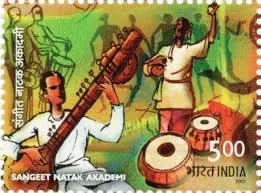Sitar: India's Soulful Stringed Instrument
The sitar is a stringed musical instrument that originated in the Indian subcontinent. It is a long-necked instrument with a pear-shaped body and a gourd resonating chamber. The sitar has between 18 and 21 strings, including 6 or 7 played strings that run over the frets and 11 or 14 sympathetic strings that resonate with the played strings. The sitar is known for its distinctive sound, which is created by a combination of the plucked strings, the sympathetic strings, and the use of various techniques such as meend (bending of the string), gamak (rapidly alternating between two notes), and taan (rapid runs of notes).
The sitar has been used in classical Indian music for centuries and has also been adopted by musicians in other genres, including jazz, rock, and world music. It has become one of the most widely recognized and iconic musical instruments from India. Famous sitar players include Ravi Shankar, Vilayat Khan, and Anoushka Shankar.
There are several types of sitar, each with its own unique characteristics and playing style. Here are some of the most common types:
- Standard sitar: This is the most common type of sitar, with a long neck, a gourd resonating chamber, and 18-21 strings.
- Vilayat Khan style sitar: This type of sitar is named after the famous sitar player Vilayat Khan, and is known for its wider frets and deeper resonance.
- Surbahar: This is a larger sitar, with a longer neck and deeper gourd, and is tuned lower than the standard sitar.
- Sursringar: This is a rare type of sitar that is even larger than the surbahar, and has a deep, resonant sound.
- Electric sitar: This is a modern type of sitar that is electrified and amplified, and is often used in fusion and contemporary music.
- Fusion sitar: This is a type of sitar that blends Indian classical music with other genres such as jazz, rock, and electronic music. It often features modifications to the instrument to enable new playing techniques and sounds.

